The Sugar Team recently had the opportunity to interview termite inspector Ken Perry of Perry’s Termite to talk about the different termite species in Albuquerque and Rio Rancho, what to look for, and of course, how to eliminate them.
The Sugar Team: How did you get into the termite business?
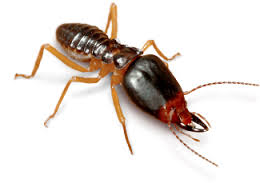 Ken Perry: I was doing construction when I was about twenty-two years old, right after high school, framing and home repair for an apartment complex, and playing softball at the time in my spare time. One of my buddies was working at Terminex. We got into talking about how much he made, how much I made, and he was making twice as much as I was…killing bugs! So, I stopped framing and stopped doing what I was doing in home repair and went over to Terminex where he was. So, I actually started in 1986 with Terminex here in Albuquerque, and worked with Terminex for maybe five years. I transferred with Terminex to Tempe, Arizona. I then went to Truly Nolan and got more experience with Truly Nolan in both Phoenix and down in Tucson. They’re very big in termites down in Tucson. So, later I managed a couple of branches for Truly Nolan in both Green Valley which is a little retirement community South of Tucson and also in Tempe. It all started with two big companies for me back in 1986 with Terminex and Truly Nolan. And I spent a short time with Superior Pest Control here in Albuquerque which was a very good family-owned company. Then I started my own business: Ken’s Termite in Albuquerque. Oh goodness…18 years ago! So, it all started back when I was only twenty-two years old. This year it will be my 29th year doing termites!
Ken Perry: I was doing construction when I was about twenty-two years old, right after high school, framing and home repair for an apartment complex, and playing softball at the time in my spare time. One of my buddies was working at Terminex. We got into talking about how much he made, how much I made, and he was making twice as much as I was…killing bugs! So, I stopped framing and stopped doing what I was doing in home repair and went over to Terminex where he was. So, I actually started in 1986 with Terminex here in Albuquerque, and worked with Terminex for maybe five years. I transferred with Terminex to Tempe, Arizona. I then went to Truly Nolan and got more experience with Truly Nolan in both Phoenix and down in Tucson. They’re very big in termites down in Tucson. So, later I managed a couple of branches for Truly Nolan in both Green Valley which is a little retirement community South of Tucson and also in Tempe. It all started with two big companies for me back in 1986 with Terminex and Truly Nolan. And I spent a short time with Superior Pest Control here in Albuquerque which was a very good family-owned company. Then I started my own business: Ken’s Termite in Albuquerque. Oh goodness…18 years ago! So, it all started back when I was only twenty-two years old. This year it will be my 29th year doing termites!
ST: Congratulations! That’s a long time! How many people presently are on your staff?
KP: My wife and I own it. She runs the office. She’s the most important person. I think I would be lost without her. I wouldn’t be able to stay on top of everything..scheduling, timing, supplies and materials, billing and collecting. There’s just no way to do it without a strong office person. I don’t know how anyone (small business) can do it without a person: someone like Diana. So, it’s just her and I, and then I’ve got three full-time guys that help me with termite and dry-rot repair. And then two others that are part-time. So, five: three full-time and two that are part-time when needed.
ST: Focusing on Albuquerque, New Mexico, are there even termites here?
KP: Yes! A lot of times people don’t believe we have them. Of course, it also depends on the part of town. The Westside of 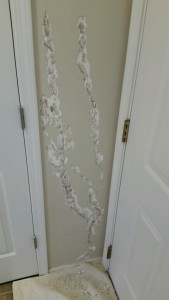 Albuquerque and Rio Rancho are probably the worst, I think because of the soft, sandy soil. I believe—depending on who you talk to—in many cases there’s four feet or more of sand on top of the lava rock. On the Westside for instance—Taylor Ranch, North of there…Paradise Hills area, Rio Rancho—it’s real soft soil on the Westside in comparison to granite up in the Heights. We get them in the Heights as well, but not as often as you see them on the Westside of town primarily. Generally speaking, it’s not a very aggressive termite compared to other places I’ve experienced termites: Phoenix, Tempe… Actually, they have very aggressive species in Arizona and even in California. So, we do have them, but they don’t do very much damage. They’ll chew up some dry wall a lot of times, and you can often look inside of a wall. They may nibble on a stud here and there, but they don’t do a whole lot of damage which probably leads to why people believe that we really don’t have termites. It’s because they’re not as aggressive.
Albuquerque and Rio Rancho are probably the worst, I think because of the soft, sandy soil. I believe—depending on who you talk to—in many cases there’s four feet or more of sand on top of the lava rock. On the Westside for instance—Taylor Ranch, North of there…Paradise Hills area, Rio Rancho—it’s real soft soil on the Westside in comparison to granite up in the Heights. We get them in the Heights as well, but not as often as you see them on the Westside of town primarily. Generally speaking, it’s not a very aggressive termite compared to other places I’ve experienced termites: Phoenix, Tempe… Actually, they have very aggressive species in Arizona and even in California. So, we do have them, but they don’t do very much damage. They’ll chew up some dry wall a lot of times, and you can often look inside of a wall. They may nibble on a stud here and there, but they don’t do a whole lot of damage which probably leads to why people believe that we really don’t have termites. It’s because they’re not as aggressive.
ST: How serious is it if a house has termites?
KP: Well, generally it’s not very serious. Let’s say for instance, one of the worst areas for termites is Corrales Heights in Rio Rancho if you’re familiar with that area. That little community is probably one of the worst areas in Rio Rancho. You can look into almost any one of those houses and check the walls, and it’s not uncommon to find termite evidence in more than one room. In multiple rooms! Probably in many cases in most of the rooms in those homes. But one thing I’ve discovered is although you’ll have termite evidence in all these rooms on the dry wall, you’ll open the walls to the studs and you’ll find that the studs are in decent shape. They’re still structural sound. So, I think that’s one of the reasons why I always tell people not to worry too much about termites if it’s diagnosed from a termite inspector. If there’s a concern you can look in the dry wall, but I just don’t do a lot of repair work here. I may change out a bottom plate once in a while, or a stud, or a piece of blocking, but usually it’s just dry wall damage. So, it’s probably due to the weak species that we have, that arid desert species. The colonies are smaller, and they don’t require as much moisture as other species. Our elevation—5,000 foot elevation—and a lot of factors come into play on why this species just isn’t as aggressive.
ST: How do they find their way into a house?
KP: Well, they forage through the soil randomly. They’re blind first off. Termites are blind. So, they’ll just forage around, and what they’re looking for are shadows. They can sense shadows which are temperature changes. For instance, if they’re foraging out in the yard somewhere the temperature above them is a certain degree. When they start foraging and find their way under the foundation of a house that temperature changes ten, fifteen degrees. So, their natural instinct is to go up and to explore. And that’s how they find houses.
Their food…they’ll continue eating wood unless it’s a cedar picket fence which they try to avoid generally. They prefer the more softer woods like pines and Douglas firs. They’re looking for woods with lots of cellulose.
So, they’ll attack dog houses, they’ll come up around tree stumps unless it’s a living tree. They won’t touch a living tree, for instance. The moisture content in the root system is too high. So, if it’s a tree that’s stressed out they attack the root system, and they start killing the tree. So, whether it’s tree stumps, or fences…they’ll even try to work their way around foundations of block walls—obviously there’s no cellulose there—until eventually they find a house. When they find a house they try to work their way up through plumbing penetrations. Cold water lines will sweat (condensate), so even the slightest amount of condensation from a cold water line is enough to attract termites to a house. Basically, they accidentally find houses unless an owner has a water leak that goes undetected or bad grading issues where the water is draining against the foundation of a house. Then, you may attract a termite problem quicker.
ST: When you discover that a house has termites, what is the typical solution to eliminate them?
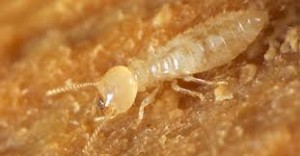
Subterranean Termite
KP: It depends on what type of termite. We have three species of termites that we deal with. Subterranean’s the most common. Drywood termite which we have, but not as common. We even have Damp Woods along the river which is very, very rare. But usually if you’re going to have a Damp Wood termite problem it’s in a crawlspace that has no ventilation, and the wood has to have a high amount of moisture in it. I’ve only had one case of Damp Woods in Albuquerque. I came across Damp Wood termites a lot in San Francisco, California, but not here in New Mexico. Only once.
So, it depends on what is found. Let’s assume Subterranean termites (the most common).
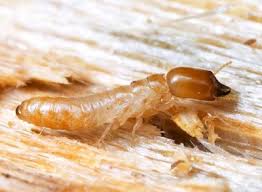
Drywood Termite
They’re a few things you can do. Localized treatment is actually an option, depending upon the situation. If it’s isolated to one area you do have the option of doing a localized treatment. It’s not the primary recommendation, but more of a secondary. The primary recommendation would be to treat the entire house. You can do that one of two ways: 1) conventional, chemical soil application where the exterior perimeter of a house is trenched. The folks will trench down about six inches or more and about six inches out, and inject chemical into the soil. They will also drill the perimeter of 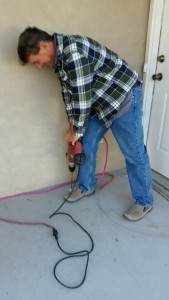 the slabs that abut the structure half-inch diameter holes about one-foot apart. Same thing: treat the area underneath the slab, patch the holes. They may go inside, pull carpet back on some foundations, although interior drilling is starting to go away because of the labels of the chemicals which allow for perimeter-only. Localized on the inside—combined with a full perimeter treatment on the outside. Second reason, a lot of these newer homes are constructed with Pex. You’re getting into a lot of the high tech plumbing, plastics, polybutylene in Rio Rancho, Pex tubing. So, a lot of the construction now is getting away from copper. The reason I’m mentioning that is our drills are designed with a kill box or stop box. When it hits grounded copper it shuts it off, so it doesn’t drill and penetrate the copper line. Well, there’s no protection when you’re drilling plastic; you’re going to go right through it. You have no idea, so you don’t want to flood a house. So, the treatments nowadays primarily are mostly exterior barriers and plumbing penetrations. If you’re dealing with dry wood termites there’s no full-perimeter treatment on dry wood. That is strictly localized treatment with dry wood termites.
the slabs that abut the structure half-inch diameter holes about one-foot apart. Same thing: treat the area underneath the slab, patch the holes. They may go inside, pull carpet back on some foundations, although interior drilling is starting to go away because of the labels of the chemicals which allow for perimeter-only. Localized on the inside—combined with a full perimeter treatment on the outside. Second reason, a lot of these newer homes are constructed with Pex. You’re getting into a lot of the high tech plumbing, plastics, polybutylene in Rio Rancho, Pex tubing. So, a lot of the construction now is getting away from copper. The reason I’m mentioning that is our drills are designed with a kill box or stop box. When it hits grounded copper it shuts it off, so it doesn’t drill and penetrate the copper line. Well, there’s no protection when you’re drilling plastic; you’re going to go right through it. You have no idea, so you don’t want to flood a house. So, the treatments nowadays primarily are mostly exterior barriers and plumbing penetrations. If you’re dealing with dry wood termites there’s no full-perimeter treatment on dry wood. That is strictly localized treatment with dry wood termites.
ST: What is the worst case of termites you’ve ever seen?
KP: One was pretty scary! It was actually in San Francisco in the Bay Area. Daly City, a 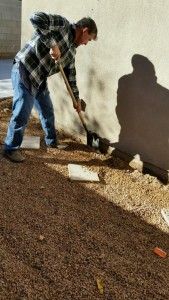 place just South of San Francisco. This house had all three species of termites! Subterranean, Dry Wood and Damp Wood! Significant damage to the floor (there was a crawl space). It was on the side of a hills so, it had issues with water run off. There was rot as well to some of the rim joists in the crawl space. So, that one was a challenge for me and a little bit scary in that I was concerned that I may not be able to stop all of these termites and rot, because it had all three. That was an interesting one for me! And I didn’t have the crew in California like I have here now. So, doing a lot of it on my own was a challenge. There was major damage to the rim joists, the floor joists, the sub floor, and the support posts. I was having to shore up a lot of the girders in the crawl space, just so the home didn’t collapse on me in certain sections because the termite damage was so bad. That was in Daly City- I’ll never forget Daly City.
place just South of San Francisco. This house had all three species of termites! Subterranean, Dry Wood and Damp Wood! Significant damage to the floor (there was a crawl space). It was on the side of a hills so, it had issues with water run off. There was rot as well to some of the rim joists in the crawl space. So, that one was a challenge for me and a little bit scary in that I was concerned that I may not be able to stop all of these termites and rot, because it had all three. That was an interesting one for me! And I didn’t have the crew in California like I have here now. So, doing a lot of it on my own was a challenge. There was major damage to the rim joists, the floor joists, the sub floor, and the support posts. I was having to shore up a lot of the girders in the crawl space, just so the home didn’t collapse on me in certain sections because the termite damage was so bad. That was in Daly City- I’ll never forget Daly City.
ST: Is there anything that the Homeowner can do on a regular basis to prevent termites from entering their home? Is there anything they should look for that may signal termites?
KP: Yes, one thing they should look for first off is peeling paint. A lot of homeowners when I’ve discovered termites knew they had something; they just didn’t know what it was. A lot of times it was the peeling, blistering paint and what looked like little specs of mud behind that. So, I would say to a homeowner, “If you have a house with dry wall, and you notice the exterior wall, the dry wall that is on the outer wall, or the dry wall that’s on the backside of plumbing. If you ever notice that start to peel back, always have someone check that out.” Dry wall doesn’t generally just start peeling on its own. There’s always a reason for it. So, I would say, look for peeling paint first off. The other two things would be grading issues and moisture leaks. If you notice any drain leaks under a sink or a bathroom or excessive water around a toilet or say, a shower curtain that doesn’t close tightly or a door that might be leaking down the side in a bathroom even something as simple as taking a shower and having water run outside that tub down onto the baseboard is a bad idea So, I would say keep on top of moisture leaks (plumbing leaks). Grading on the outside: make sure that the run off—snow melt or rain water—doesn’t collect against the foundation. You’re just asking for a problem if you have grading issues on a house. You want it sloped away from the foundation as best you can. It’s always related to water with termites, because they’re everywhere. They’ll find your house. It’s whether or not they decide to stay at your house. Sometimes you can help direct them away by keeping your water issues to a minimum.
However, having experienced termites in New Mexico, Arizona and California I would say if you’re a homeowner, buyer or seller and you have a diagnosis of termites by a termite inspector, I would say, “Don’t panic!” In New Mexico termites don’t do much damage. Don’t panic. Don’t run. If you like the house, don’t freak out because of termites. They are a weak species. Get a couple of opinions. And dry wall is easy! If you find an area and you’re worried there’s stud damage it can’t be any more than a $100 bill to have someone come in, open a little bit of dry wall, and just look at the studs. And more often than not, you’ll find that the studs are fine. It’s just a little bit of cosmetic repair needed to some dry wall.
ST: How does Perry’s Termite differentiate themselves from their competitors here in Albuquerque?
KP: One of the differences, I think, in my company compared to most companies in New Mexico: I will warranty my termite inspection reports for real estate for one year—even hidden termites. I don’t know if anyone else is offering that yet. Hidden termites are excluded in most other company’s warranties. For instance, if I perform a termite inspection for you today on a house and if it checks out fine (no signs of termites), and later during a remodel you open up a wall and find termites. All you need to do is call me and I’ll take care of it because it’s under warranty. That’s probably the main difference between me and everyone else: the warranty on real estate termite inspection reports.
We surely are impressed by Ken’s knowledge and experience! Twenty-nine years of experience is definitely nothing to sneeze about. When he does inspections for us his love for his job completely shines through (we tease him by telling him that his enthusiasm reminds us of the “Crocodile Hunter”).
So, if you find suspected termite evidence in your home, whatever you do, don’t panic! 🙂
Sincerely,
Sutter & Linda Sugar
(505) 850-9977
Home@TheSugarTeam.com